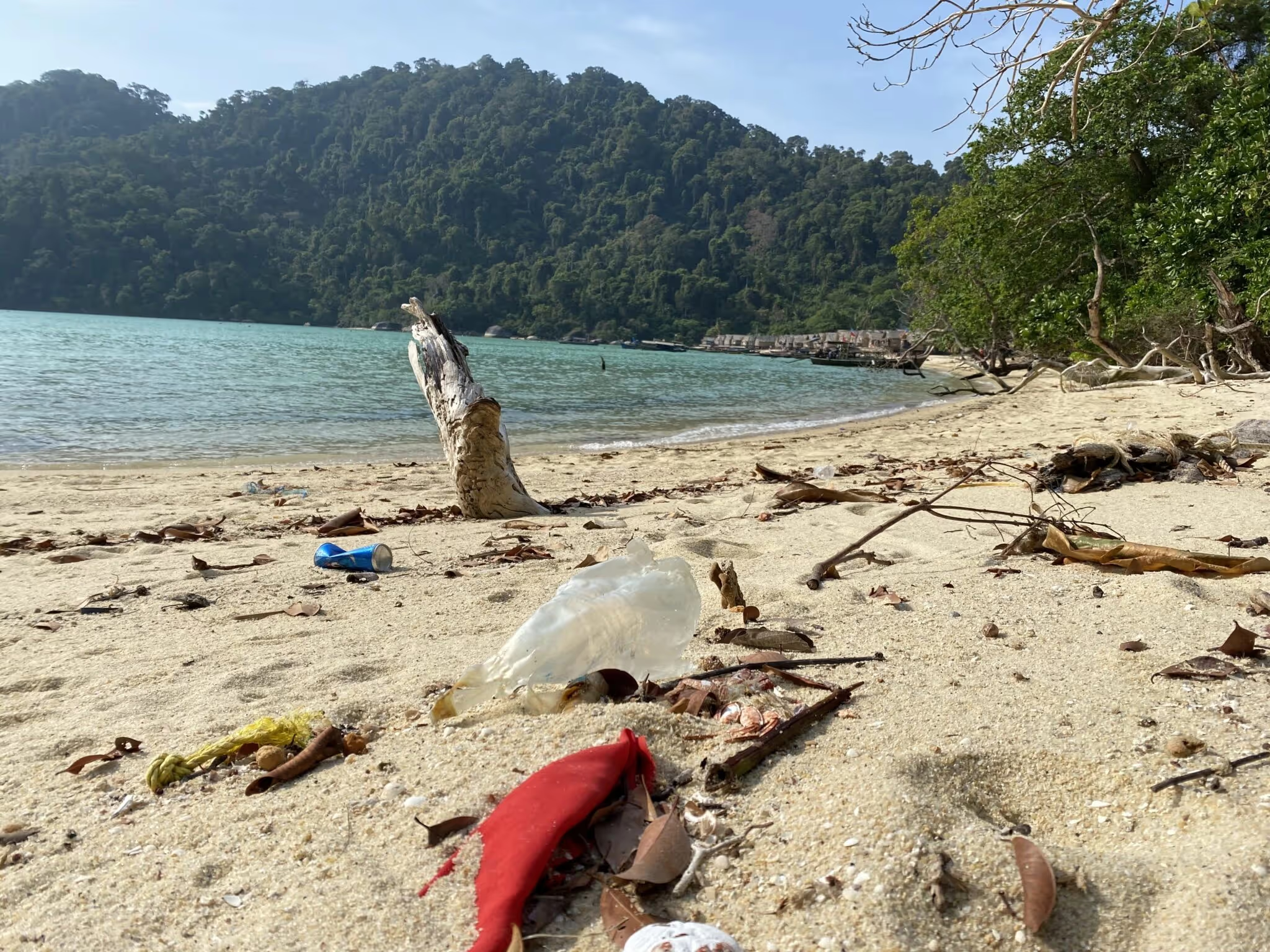Table of content
As awareness of the environmental impact of plastic waste grows, both companies and consumers are making efforts to reduce reliance on single-use plastics.
Yet, despite this shift, an estimated 10 to 14 million tons of plastic still enter the oceans each year.
So how does plastic end up in the ocean?
As our dependence on plastic continues to rise, so does the amount of plastic waste we generate. Unfortunately, much of this waste is not properly managed, allowing it to leak into the environment and, eventually, the oceans.
The Impact of Plastic Pollution on the Ocean
Plastic is everywhere: from water bottles and grocery bags to medical equipment and car parts. But while it’s convenient, plastic poses a severe threat to marine life and ecosystems.
Every year, thousands of marine animals die or suffer injuries after ingesting or becoming entangled in plastic debris. For example, leatherback sea turtles often mistake floating plastic bags for jellyfish. Ingesting these bags can cause intestinal blockages, starvation, and death, contributing to population decline and putting entire species at risk.
But the harm doesn’t stop at wildlife.
As plastic breaks down into microplastics, these tiny particles are ingested by fish and shellfish, which ultimately ends up on our plates.
Emerging evidence suggests that microplastics can cause inflammation, gastrointestinal issues, and reproductive problems in humans. The plastic problem in the ocean is not only an environmental crisis: it’s a human health concern too.
How Does Plastic Enter the Ocean?
Since more than 96% of the Earth’s water is contained in oceans, they often become the final destination for improperly managed plastic. The main pathways for plastic pollution to reach the ocean include:
Waste mismanagement
The largest contributor to ocean plastic pollution is improper disposal. Millions of tons of plastic are sent to landfills each year, but not all of it is contained. Poorly managed landfills and lack of collection systems allow plastic to escape into the environment — eventually reaching rivers and oceans.
Littering and Direct Dumping
Plastic pollution also comes from deliberate or accidental littering: whether trash is tossed into waterways or blown from streets into rivers and coastlines. Common litter items include cigarette butts, plastic bags, and food wrappers.
Industrial Spills and Leaks
Industrial accidents during the manufacturing, storage, or transportation of plastic products often lead to leaks. One major pollutant is plastic pellets or “nurdles”, which are released into waterways in the millions every year.
Plastic Leakage in Southeast Asia
As of 2022, Asia is the largest contributor to ocean plastic pollution — primarily due to inadequate waste management infrastructure in several countries. Here are five major sources of plastic leakage in the region:
• China: The top contributor, producing around 60 million tons of plastic waste in 2020 — but recycling only a fraction.
• Indonesia: The second-largest source, contributing more than 600,000 tons of plastic to the ocean annually.
• The Philippines: Roughly 750,000 tons of plastic waste enters the ocean from the Philippines each year.
• Vietnam: An estimated 280,000 to 730,000 tons of plastic waste leaks into the ocean annually.
• Thailand: The fifth-largest source in Southeast Asia, contributing about 428,000 tons of uncollected plastic waste each year.
What Can Be Done?
Solving the plastic crisis requires global collaboration and action across all sectors of society. Here are a few key solutions:
Reduce Plastic Use
The most effective way to fight plastic pollution is to stop it at the source. This includes:
• Refusing single-use plastics like straws, bags, and cutlery
• Choosing reusable products and low-waste alternatives
• Supporting brands that minimize plastic packaging
• Exploring compostable or refillable options for daily essentials
Invest in Waste Management Infrastructure
To address one of the root causes, countries must improve systems for waste collection, sorting, and recycling:
- Build or upgrade collection and recycling facilities
- Properly manage landfill sites
- Encourage policies and incentives for circular waste practices
Raise Awareness and Educate the Public
Public education plays a crucial role in promoting responsible consumption and disposal. By making people more aware of their plastic footprint, we can inspire behavioral change and community-level action.
Support Recycling and the Circular Economy
Recycling provides both environmental and economic value — especially in underserved regions. Collecting and repurposing plastic waste not only diverts it from nature but also creates jobs and supports local livelihoods.
A Shared Responsibility
Every day, vast amounts of plastic waste are produced, and much of it ends up in the ocean. Mismanagement, littering, and industrial leakage are the biggest drivers of this crisis. The effects are devastating, but the solutions are within reach.
By reducing plastic use, investing in infrastructure, and empowering local communities, we can significantly cut plastic leakage and protect marine life, and ourselves.
At Second Life, we help companies reduce their plastic footprint through high-impact collection and recycling projects. Our mission is to turn plastic waste into social and environmental value.






